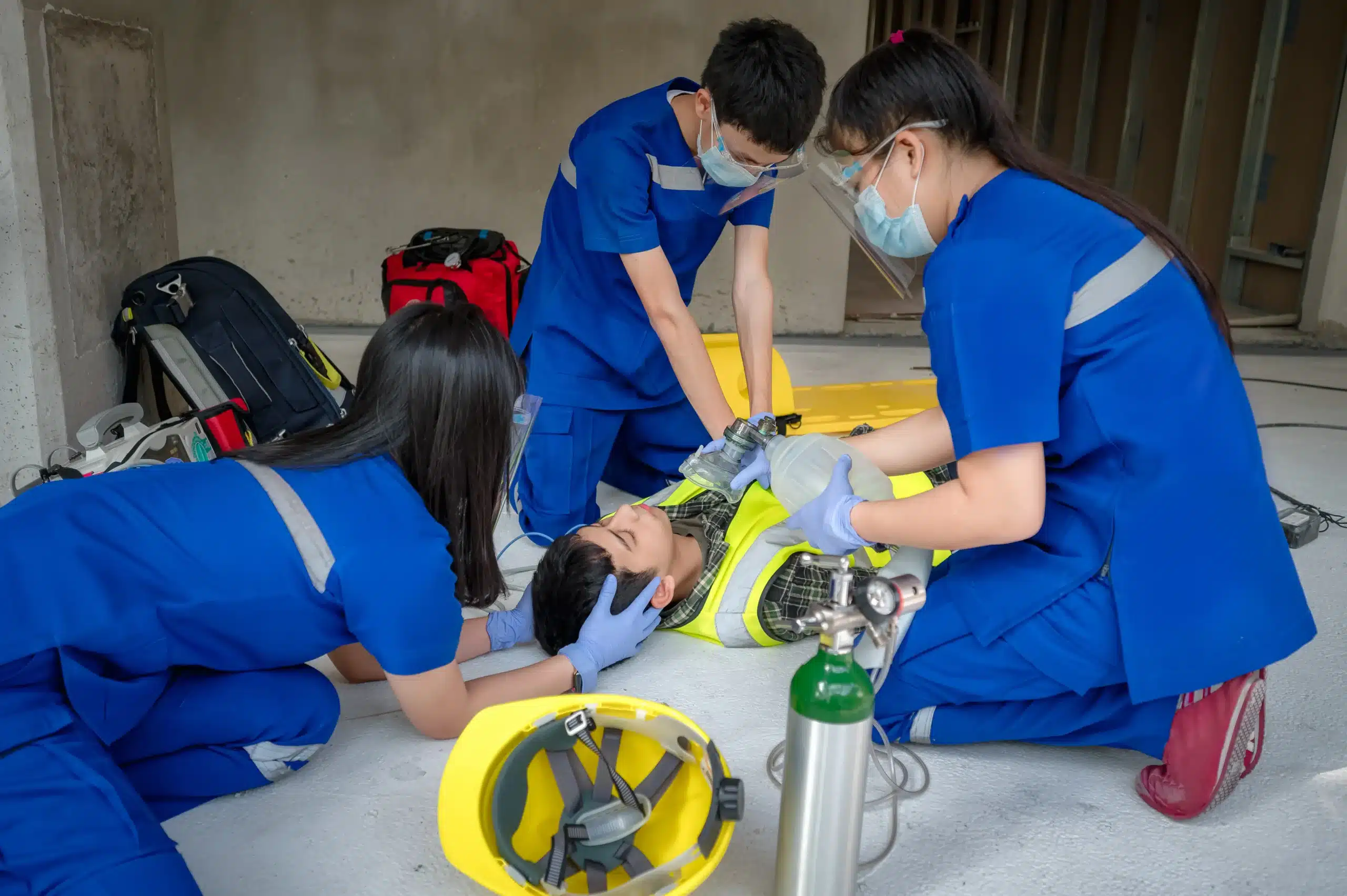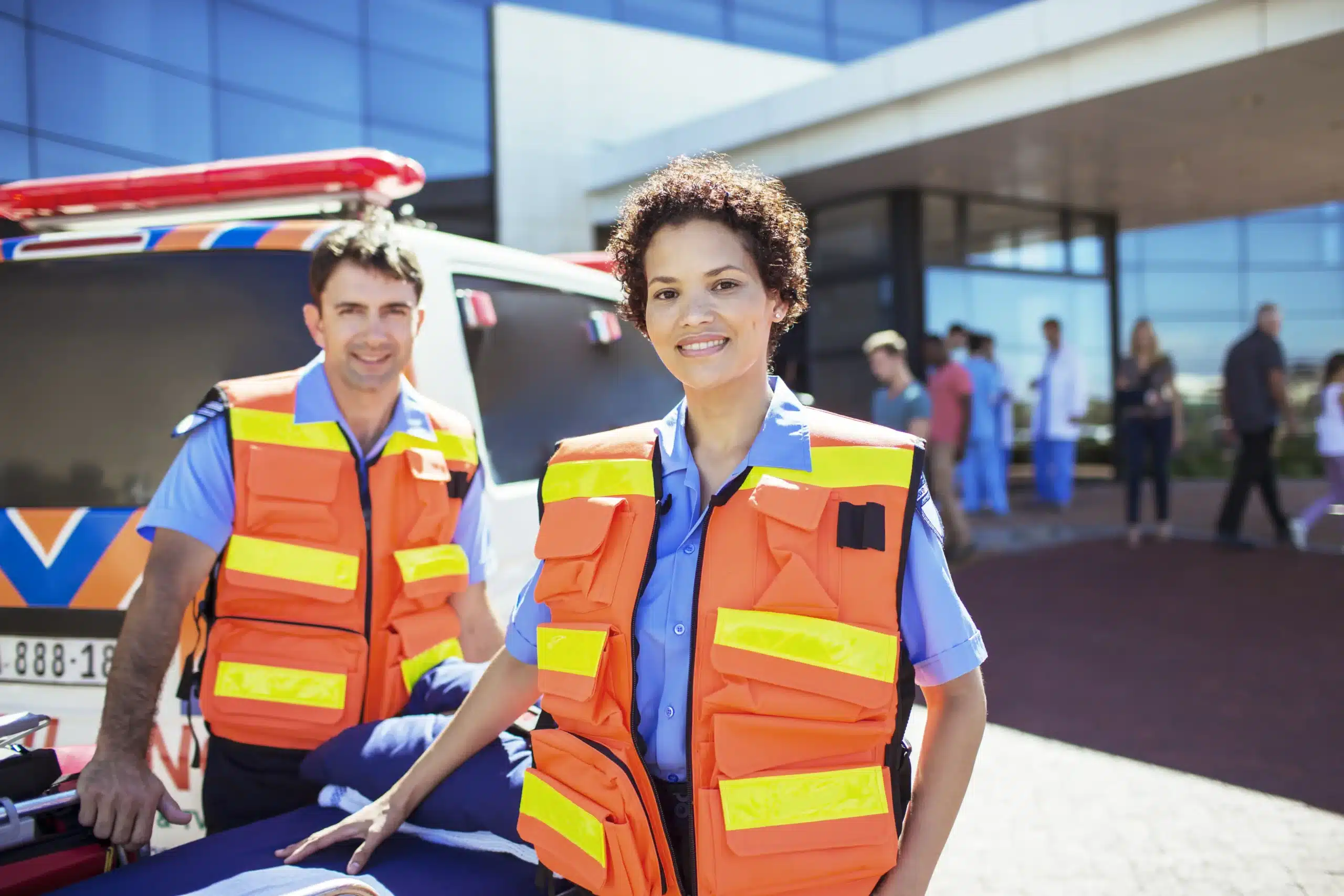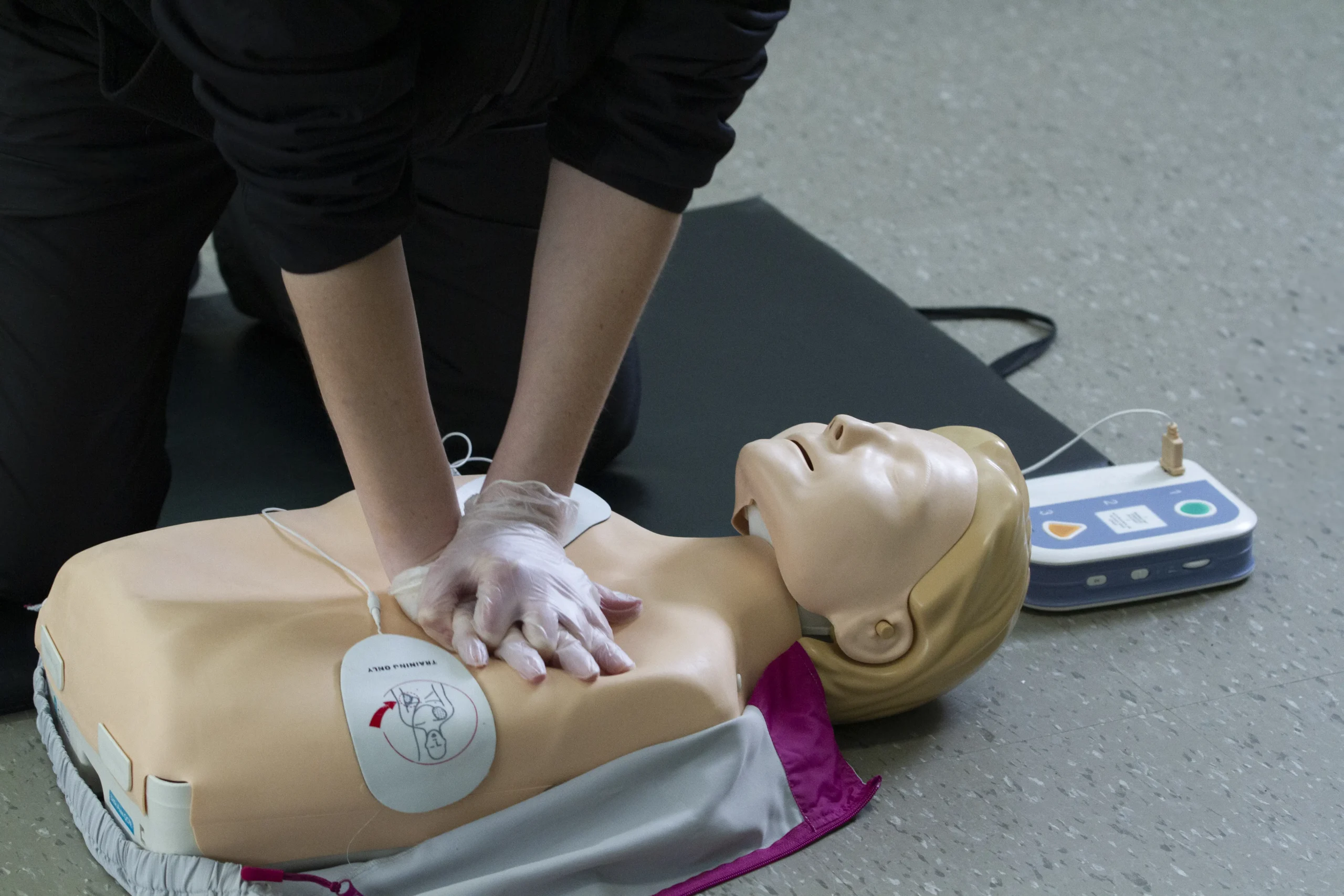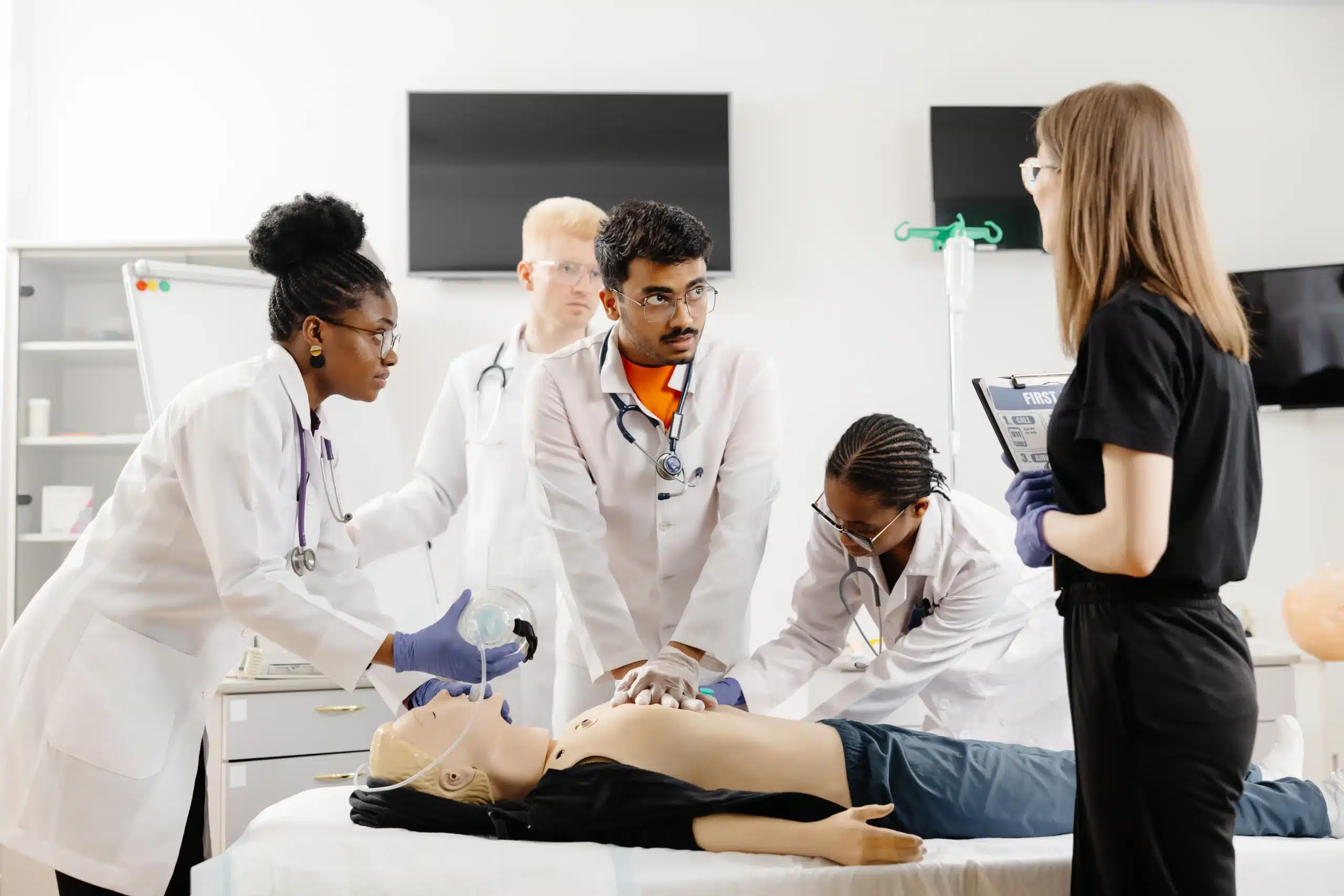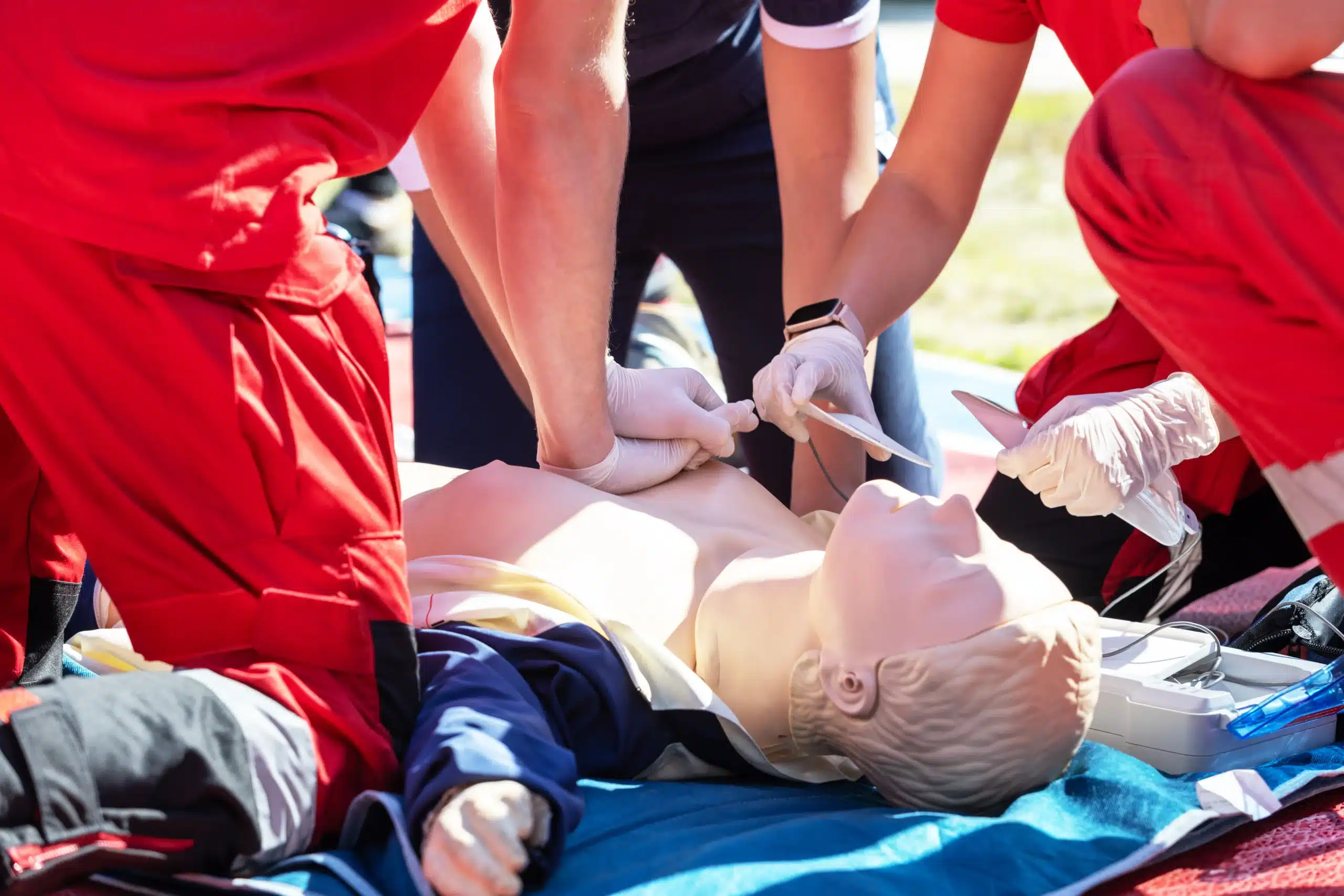Empowering yourself with life-saving skills is one of the most valuable things you can do, both for yourself and your community. If you’ve been searching for “Sacramento CPR classes near me,” you’re clearly someone who cares about being prepared for emergencies. This guide will answer all your questions about CPR training in Sacramento. We’ll cover the different levels of certification, discuss the importance of hands-on training, and help you find the perfect class to fit your needs and budget. Let’s explore how you can become a more confident and capable responder in critical situations.
Key Takeaways
- CPR training empowers you to save lives: Whether you work in healthcare, childcare, or simply want to be prepared, CPR skills enable you to respond effectively in emergencies. Prioritize hands-on training for true confidence.
- Explore CPR class options in Sacramento: Find the right course for your needs, from basic to advanced certifications. Consider providers like Safety Training Seminars, the Red Cross, and local fire departments, and choose a format that suits your learning style (in-person, online, or blended).
- Keep your CPR skills sharp: Certification is typically valid for two years. Refresh your knowledge and technique with renewal courses and regular practice to maintain your life-saving abilities.
What is CPR and Why is it Important?
CPR (Cardiopulmonary Resuscitation) is a lifesaving technique used in emergencies when someone’s heartbeat or breathing has stopped. It combines chest compressions and rescue breaths to maintain blood flow to the brain and other vital organs until professional help arrives. Learning CPR empowers you to provide immediate assistance in these critical situations. For more information on CPR training and certification, check out the Red Cross resources available in Sacramento.
Common CPR Training Misconceptions
One common misconception is the validity of online-only CPR certifications. While convenient, these certifications often aren’t enough to meet requirements. Major organizations like the American Heart Association, American Red Cross, and American Safety & Health Institute typically require hands-on training for official CPR certification. Another misconception revolves around fire departments. While they can be a resource, their programs and costs aren’t standardized. It’s always best to check with your local fire department for specific information on their CPR class offerings.
Why Learn CPR?
Learning CPR is a valuable skill for everyone. Knowing CPR can make a profound difference in a life-or-death situation, giving you the confidence to act quickly and effectively. For businesses, offering CPR training demonstrates a commitment to employee well-being. CPR training resources highlight the importance of a hands-on approach, ensuring individuals can confidently apply their skills in real-world emergencies. Consider investing in this essential skill—it could save a life.
CPR Classes in Sacramento
Sacramento offers a variety of CPR classes to meet the needs of healthcare providers, childcare professionals, and the general public. Whether you’re looking for basic life support training or advanced certification, you can find a course that fits your requirements. Let’s explore some of the CPR class options available in Sacramento.
Basic Life Support (BLS)
Basic Life Support (BLS) training provides the foundational skills necessary to respond to life-threatening emergencies. These BLS courses cover core techniques like CPR for adults, children, and infants, along with how to use an automated external defibrillator (AED) and relieve choking. BLS certification is crucial for healthcare professionals and is often a requirement for many other professions. It equips you with the confidence to act quickly and effectively in critical situations.
Advanced Cardiac Life Support (ACLS)
Advanced Cardiac Life Support (ACLS) builds upon the fundamentals of BLS and focuses on the management of cardiovascular emergencies. This advanced training is designed for healthcare providers who lead or participate in resuscitation teams. ACLS certification covers topics such as airway management, pharmacology, and effective team dynamics during cardiac arrest and other serious medical events.
Pediatric Advanced Life Support (PALS)
Pediatric Advanced Life Support (PALS) is specifically tailored for healthcare providers who care for infants and children. This specialized training emphasizes the unique physiological differences between children and adults, providing the knowledge and skills to effectively manage pediatric emergencies. PALS certification covers topics like respiratory distress, shock, and post-arrest care in young patients.
First Aid and AED Training
While not strictly CPR, first aid and AED training are valuable complements to any CPR course. These first aid classes teach you how to respond to a wide range of medical emergencies, from minor injuries like cuts and burns to more serious situations like seizures and allergic reactions. Learning how to use an AED is also a critical component, as these devices can significantly improve survival rates in cases of sudden cardiac arrest. Many CPR classes in Sacramento include first aid and AED training as part of the curriculum.
Top Sacramento CPR Training Providers
Finding the right CPR training can feel overwhelming with so many options. To help you decide, we’ve compiled a list of trusted CPR training providers in Sacramento.
Safety Training Seminars
Since 1989, Safety Training Seminars has offered certification courses in CPR, First Aid, BLS, ACLS, PALS, NRP, and EMSA Childcare. This woman-owned company is known for its commitment to affordability, offering a low-price guarantee for all courses. Safety Training Seminars serves Sacramento, Roseville, and Rocklin, CA.
American Red Cross
The American Red Cross provides CPR/AED classes and certification in Sacramento. They offer various learning formats, including in-person classes, online training, and blended learning (a combination of online and in-person instruction). Their in-person training results in a two-year certification that meets OSHA requirements.
CPR Certification Sacramento
CPR Certification Sacramento offers American Heart Association (AHA) certified CPR and First Aid classes. They have trained over 100,000 students nationwide and offer classes in Sacramento and surrounding areas. Both classroom and on-site options are available for groups.
Sacramento Fire Department
Fire departments can be a resource for CPR classes, and the Sacramento Fire Department may offer training. However, class availability varies depending on the department’s resources and location. Contact them directly to find out about current class offerings.
What Happens in a Sacramento CPR Class?
Curious about what goes on during CPR training? CPR classes in Sacramento combine instruction and hands-on practice to give you the skills to respond confidently in an emergency. Here’s a look at what a typical class involves:
Class Length and Format
CPR class length depends on the type of course and the training provider. You can find everything from shorter two-hour courses to more in-depth four-hour sessions. Safety Training Seminars offers a range of courses to accommodate busy schedules. Most classes follow a similar structure, incorporating discussions, demonstrations, and practice.
Practice and Apply CPR Skills
Hands-on learning is at the heart of effective CPR training. You’ll learn techniques like chest compressions, rescue breaths, and how to use an AED. Instructors will lead you through realistic scenarios, providing opportunities to apply your new skills in a controlled setting. This practical training builds muscle memory and confidence so you can act quickly and effectively during a real emergency.
Get Certified
After successfully completing your CPR class, you’ll receive an official certification card from the American Heart Association (AHA). This certification is generally valid for two years. Keeping your certification up to date is important for maintaining your skills and showing you’re ready to help when it matters most. CPR Certification Sacramento offers more information on certification periods.
CPR Class Costs in Sacramento
CPR certification is an investment in life-saving skills. Understanding the costs involved can help you plan for your training. This section breaks down typical price ranges in Sacramento, explores available discounts, and highlights Safety Training Seminars’ commitment to affordability.
Typical Prices
In Sacramento, the cost of Basic Life Support (BLS) CPR certification typically starts around $70. This price generally covers individual training sessions and provides comprehensive instruction in essential life-saving techniques. Keep in mind that prices can vary based on the training provider and the specific course content. For example, adding First Aid certification to your CPR training will usually increase the overall cost.
Discounts and Group Rates
Many CPR training providers in Sacramento offer discounts for group bookings. This can be a smart option for businesses, community groups, or families who want to train together. Some providers offer discounted rates for groups of five or more. Contact providers directly to inquire about group discounts and package deals to find the most cost-effective solution.
Safety Training Seminars’ Low Price Guarantee
Safety Training Seminars is committed to making CPR training accessible. They offer a low price guarantee on their courses, ensuring high-quality training at a competitive price. Since 1989, they’ve built a strong reputation for comprehensive courses and experienced instructors. Visit their website to learn more about their courses, including BLS, ACLS, EMSA Child Care Health & Safety, and RQI classes.
CPR Certification Renewal
How Long is Certification Valid?
CPR certification is typically valid for two years. This is the standard timeframe established by organizations like the American Heart Association and the American Red Cross to ensure rescuers maintain their life-saving skills and knowledge. Staying up-to-date with the latest guidelines and techniques is essential for effective CPR in real-life emergencies.
Renew Your Certification
Renewing your CPR certification every two years is crucial for keeping your skills sharp. Training providers, including Safety Training Seminars, offer convenient renewal courses designed to refresh your knowledge and cover the most current CPR practices. These refresher courses are often shorter than the initial certification class, making them easy to fit into a busy schedule. Even if your certification has expired, remember that providing CPR, even if not perfectly up-to-date, is always better than doing nothing in a crisis. However, maintaining a current CPR certification demonstrates your commitment to providing the best possible care and ensures you’re prepared to respond confidently and effectively. For the best value on your renewal, take a look at Safety Training Seminars’ low price guarantee.
Flexible CPR Learning Options in Sacramento
Finding the right CPR class often comes down to scheduling and learning style. Luckily, Sacramento offers a variety of options to fit your needs. Let’s explore some of the flexible learning formats available.
In-Person or Online Training
Many organizations, including the American Red Cross, offer both in-person and online CPR/AED training. Online courses provide a convenient way to learn the basics at your own pace, often incorporating videos and interactive modules. In-person classes, on the other hand, provide hands-on practice and direct feedback from certified instructors. Choosing the best format depends on your personal preference and how you learn most effectively. Some people thrive in a structured classroom setting, while others appreciate the flexibility of online learning. Consider what works best for you.
Blended Learning
Blended learning combines the best of both worlds. This approach typically involves completing online coursework followed by an in-person skills session. This format allows you to absorb the knowledge portion at your own speed and then focus on practicing essential skills with a qualified instructor. Blended learning often satisfies OSHA requirements for certain professions, ensuring you receive comprehensive training that meets workplace standards. It’s a great option for those who want the convenience of online learning with the added benefit of hands-on practice.
Safety Training Seminars’ RQI Program
Safety Training Seminars offers the RQI (Resuscitation Quality Improvement) program, a unique and flexible approach to CPR training. RQI incorporates both online and in-person components, allowing participants to refresh and maintain their skills regularly. This ongoing training model helps ensure that healthcare providers maintain their competency in life-saving techniques. The RQI program’s adaptable format makes it easier to fit crucial training into busy schedules.
Choose the Right CPR Class
Picking the right CPR class depends on your specific needs. Whether you’re a healthcare provider, work in childcare, or simply want to be prepared for emergencies, there’s a course out there for you. Let’s break down the options to help you find the perfect fit.
For Healthcare Professionals
Healthcare professionals, such as doctors, nurses, and EMTs, need CPR training that aligns with the rigorous standards of organizations like the American Heart Association (AHA). AHA BLS courses cover high-quality CPR techniques, AED use, and other essential life-saving skills specifically designed for healthcare providers. These courses go beyond basic CPR and delve into the specific protocols and procedures relevant to professional medical settings. Make sure the class you choose is AHA-compliant to meet workplace requirements and ensure you’re equipped with the most up-to-date knowledge.
For Childcare Providers
If you’re a childcare provider in California, CPR and First Aid certification are essential. The state requires specific training to ensure the safety and well-being of the children in your care. The California Department of Social Services (CDSS) offers funding to support childcare providers in obtaining these essential certifications. For more information on funding and training requirements, explore the EMSA Child Care Health & Safety program. This program covers crucial topics like CPR, First Aid, and preventive health and safety practices, equipping you with the skills and confidence to handle emergencies effectively.
For the Public and Parents
Learning CPR as a member of the general public or a parent empowers you to respond confidently in emergencies. Several organizations offer CPR and First Aid training tailored to the public, including the American Red Cross and CPR Certification Sacramento. These courses cover the fundamentals of CPR and often include AED training. Look for a class that fits your schedule and learning style. Many providers offer in-person, online, and blended learning options. Safety Training Seminars provides AHA-certified training for individuals and groups, ensuring you receive current, relevant information and gain practical skills to make a real difference in critical situations. Consider adding RQI training to your skillset for enhanced competency in high-quality CPR.
Find More CPR Resources
Once you’ve completed your CPR training, staying connected with the broader CPR community is important for continued learning. Here are some additional resources to explore:
Local Centers and Fire Departments
Your local fire department is a great starting point in your search for more CPR resources. Many fire departments offer CPR classes, though availability varies. Check with your local Sacramento fire department to see what they offer. Beyond classes, fire departments can often connect you with other community programs related to CPR and first aid.
Apps and Online Resources
While convenient, online-only CPR certifications have limitations. Major organizations like the American Heart Association, American Red Cross, and American Safety & Health Institute don’t accept fully online CPR training for official certification. However, reputable online resources can supplement your in-person training. Use these resources to review techniques or access updated guidelines. Just remember that hands-on training is essential for proper certification.
Support Groups and Skill Development
Connecting with others interested in CPR can reinforce your skills and provide ongoing support. Look for local support groups or online forums where you can share experiences and stay up-to-date on the latest CPR practices. Regular practice is key to maintaining proficiency, especially since CPR skills can deteriorate over time. Whether you’re learning CPR for personal knowledge or workplace safety, continued training demonstrates a commitment to preparedness.
Prepare for Your CPR Class
So, you’ve signed up for a CPR class—fantastic! Taking a CPR class is a rewarding experience, and being prepared will help you get the most out of it. Here’s how to get ready for your upcoming training.
What to Bring
CPR classes are designed to be interactive and hands-on. While your instructor will provide the training equipment, there are a few things you should bring for a comfortable and productive learning experience. A notebook and pen are helpful for taking notes and jotting down any questions that arise. Since you’ll be practicing physical techniques, wear comfortable clothing that allows for a full range of motion. Bringing a water bottle is also a good idea to stay hydrated throughout the session. Check with Safety Training Seminars about any specific requirements for their CPR courses.
Make the Most of Your Training
Active participation is key to getting the most out of your CPR training. Don’t hesitate to ask questions and engage with your instructor and classmates. Hands-on practice is crucial for building muscle memory and confidence. The more you practice during the class, the better prepared you’ll be to respond effectively in a real emergency. Remember that regular practice after your initial CPR certification is essential for maintaining your skills. Consider scheduling refresher CPR courses or practicing with a friend. The American Red Cross notes that skills can deteriorate, especially within the first year, so ongoing practice is important.
Related Articles
- Why CPR Is Important in Healthcare
- CPR Classes in Sacramento: The Complete Guide – Sacramento CPR Classes
- BLS Classes in Sacramento: Your Complete Guide – Sacramento CPR Classes
- Online ACLS Classes in Sacramento: Your Guide – Sacramento CPR Classes
- Pediatric CPR & First-Aid Training in Sacramento – Sacramento CPR Classes
Frequently Asked Questions
What’s the difference between BLS and ACLS?
BLS (Basic Life Support) teaches the essentials of CPR, AED use, and choking relief. It’s the foundation for anyone who wants to learn CPR. ACLS (Advanced Cardiac Life Support) is more advanced and geared towards healthcare professionals. It covers complex situations like cardiac arrest and stroke. Think of BLS as the first step, and ACLS as the next level for those working in healthcare.
How do I choose a CPR class in Sacramento?
Finding the right class depends on your needs. If you’re a healthcare provider, look for an AHA-compliant BLS or ACLS course. Childcare providers should check out the EMSA Child Care Health & Safety program. For the general public, many organizations offer basic CPR and First Aid training. Consider factors like location, schedule, and cost when making your decision. Safety Training Seminars offers a low-price guarantee, which might be helpful if you’re on a budget.
Are online-only CPR certifications accepted?
While online CPR courses are convenient for learning the basics, they typically don’t meet the requirements for official certification. Organizations like the AHA and Red Cross require hands-on training. Think of online courses as a good starting point, but you’ll need in-person training for a valid certification.
How much do CPR classes cost in Sacramento?
Prices vary, but BLS classes usually start around $70. Adding First Aid training will likely increase the cost. Many providers offer discounts for groups, so check if that applies to you. Safety Training Seminars has a low-price guarantee, making them a good option to explore.
How often do I need to renew my CPR certification?
CPR certifications are typically valid for two years. It’s important to renew your certification to stay up-to-date on the latest guidelines and maintain your skills. Many providers offer refresher courses that are shorter than the initial certification class.


